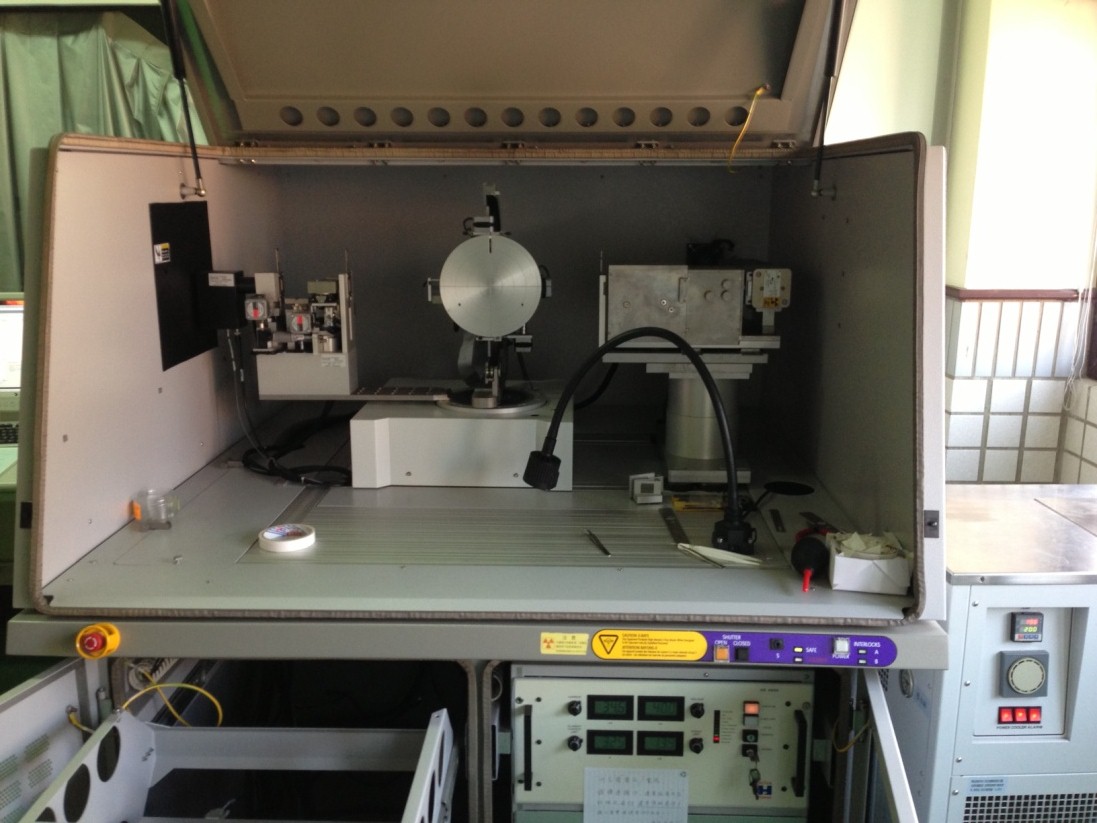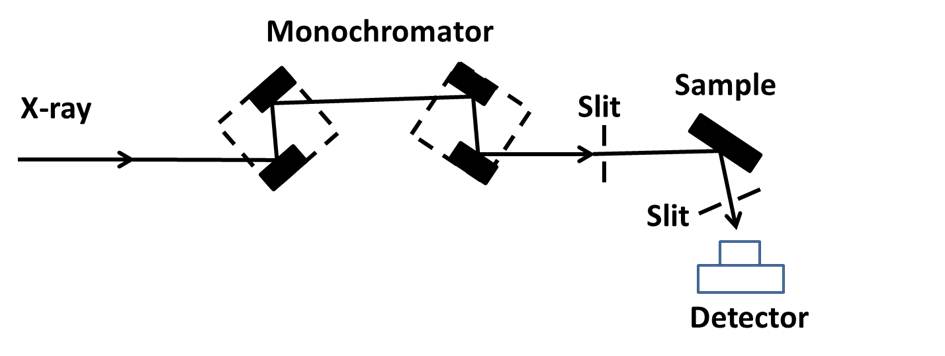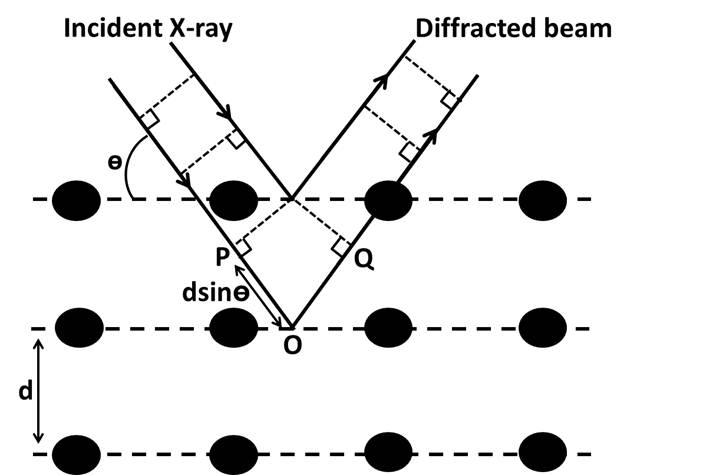Department of Physics, National Central University
Condensed Matter Physics Laboratory

High resolution x-ray diffraction (HRXRD)
The high resolution X-ray diffractometer (Bede D1) facility is supported by NCU center for science and technology as shown in the below figure.

The interior part sketch and the real facility are shown in the below figure. The monochromator are composed of two crystals, which has two channels for each crystal for different measurement mode.

Two major modes of HRXRD employed in our work are rocking curve and reciprocal space mapping (RSM) measurements. Both of two modes are based on Bragg diffraction equation:
, where d is the (100) plane spacing for silicon substrate, θ is the angle between incident plane and the surface plane, n is an integer, λ is 1.54Å, which is the wavelength of monochrome incident X-ray with copper material.

Strain is analyzed using X-ray diffraction around the (004) ω-2θ rocking curve scanning. If the film of interest is uniformly distributed, the strain can be calculated from the change angle with respect to the substrate, Δθ. It is determined with taking the Δθ into the derivative of the Bragg equation:

In addition, the Bede RADS Mercury software is utilized to dynamically simulate the strain distribution profile.
When reciprocal space mapping mode is applied, the loop scanning is used and the reciprocal space mapping is constructed by adding all the loop scan result to determine whether the lattice structure is psuedomorphic or not, shown as below figure.
© 中央大學凝態物理實驗室 Condensed Matter Physics Laboratory, National Central University
320 桃園縣中壢市中大路300號 No.300, Jhongda Rd., Jhongli City, Taoyuan County 32001, Taiwan(R.O.C.)
Tel: 886-3-4227151ext.65399 | Email: wywoon@phy.ncu.edu.tw